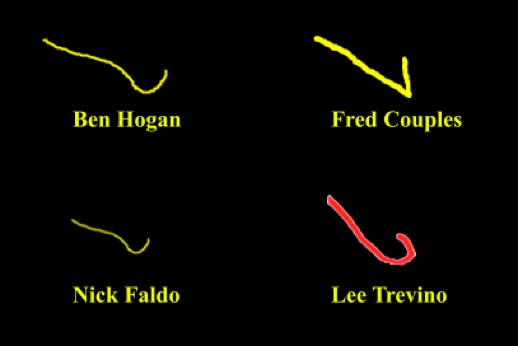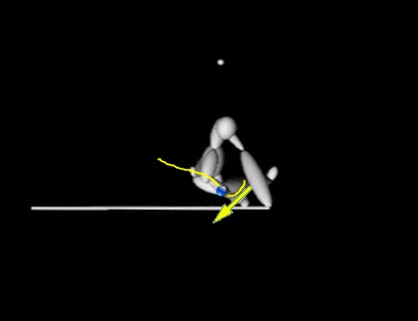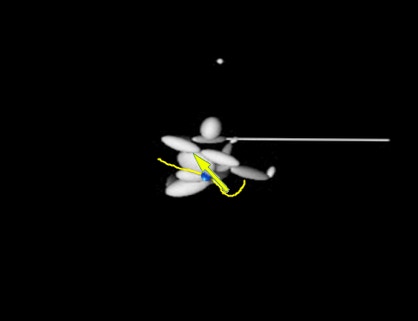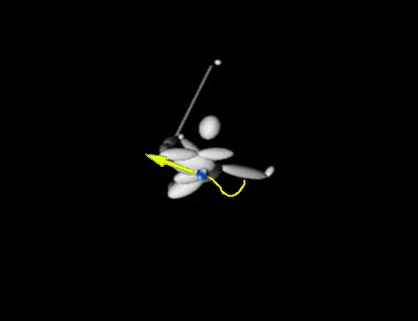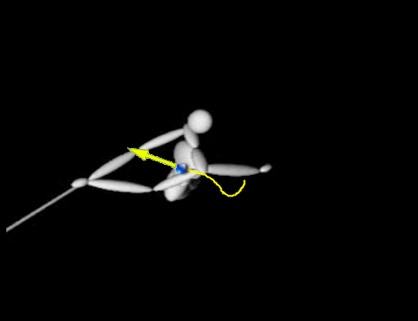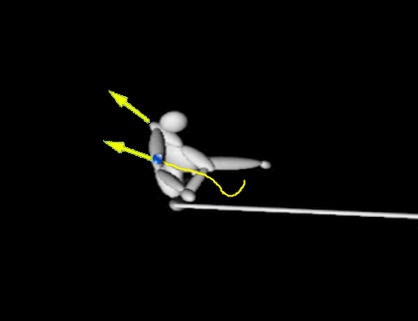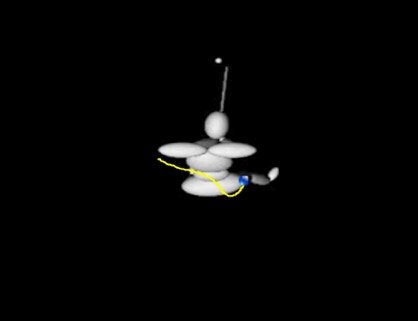Lorem
Instructions
As you hover over the button, the image for that frame will appear. Likewise, when you click on the button, the frame information will appear. However, if you click a second time, the frame information will disappear.
The Right Hip trace is not what we expected. The action of the Hips is most often described as a turning motion. While there is undoubtedly rotation involved in what the Hips do, merely rotating hips can be highly destructive. If the Golfer solely rotates the Hips, this rotation may contribute to the club flying prematurely. Therefore, there must be a lateral component to the Hip Rotation.
Finish Right!
When the Finish is seen compared to Address, it is very apparent that the entire Rightside is moving Right of the target. The overwhelming instinct is that the Rightside turns around to the left.
Frame 6
As we have mentioned so often, the Right Hip is constantly moving along its 20-degree path. This motion encourages the Right Shoulder to move even farther to the right. Therefore, moving effectively to the right after Impact with the Right Hip and the Right Shoulder can prevent the problematic "over the top" move.
Frame 1
When we first see the Right Hip trace, three things are noticeable:
1. How deep the Right goes.
2. How much it goes to the Right.
3. How far past Impact it goes.
Frame 6
As we have mentioned so often, the Right Hip is constantly moving along its 20-degree path. This motion encourages the Right Shoulder to move even farther to the right. Therefore, moving effectively to the right after Impact with the Right Hip and the Right Shoulder can prevent the problematic "over the top" move.
Frame 4
This instant of impact is the "Moment of Truth." It is not a position. Instead, it is a motion. All efforts should be flowing through the ball to the Finish. Continue pushing the Right Foot to aggressively and smoothly direct the Right Hip on its 20 degrees to the right path.
Frame 5
The Right Hip continues on its 20-degree path to the right. Unfortunately, so many tend to turn to the left instead of continuing in the outward direction.
Frame 3
When the Hands are level with the Right Shoulder in the Downstroke, the work of the Right Hip is starting. The arrow here shows the Right Hip moving 45-degrees toward the target line. With the clubshaft level and parallel to the target line, the Right Hip will settle into its 20-degree direction until the end of the Stroke.
Frame 2
Frame two shows us the Right Hip's dominant direction and work at the start of the Backstroke. The arrow indicates the 50-degree angle the Right Hip starts on. It also shows the depth of the Right Hip retraction. This starting motion feels like a pure turn.
We initially thought when first seeing the Right Hip Trace; this could be it, gentlemen. Our first thought, we have uncovered the Hogan secret. However, as we scrutinized other players, we quickly realized their Right Hip all had this straight to the right trace that appears to turn yet feels more straight.
Lorem ipsum dolor sit amet, consectetur adipiscing elit. Aliquam tincidunt lorem enim, eget fringilla turpis congue vitae. Phasellus aliquam nisi ut lorem vestibulum eleifend. Nulla ut arcu non nisi congue venenatis vitae ut ante. Nam iaculis sem nec ultrices dapibus. Phasellus eu ultrices turpis. Vivamus non mollis lacus, non ullamcorper nisl. Pellentesque habitant morbi tristique senectus et netus et malesuada fames ac turpis egestas. Phasellus sit amet scelerisque ipsum. Morbi nulla dolor, adipiscing non convallis rhoncus, ornare
